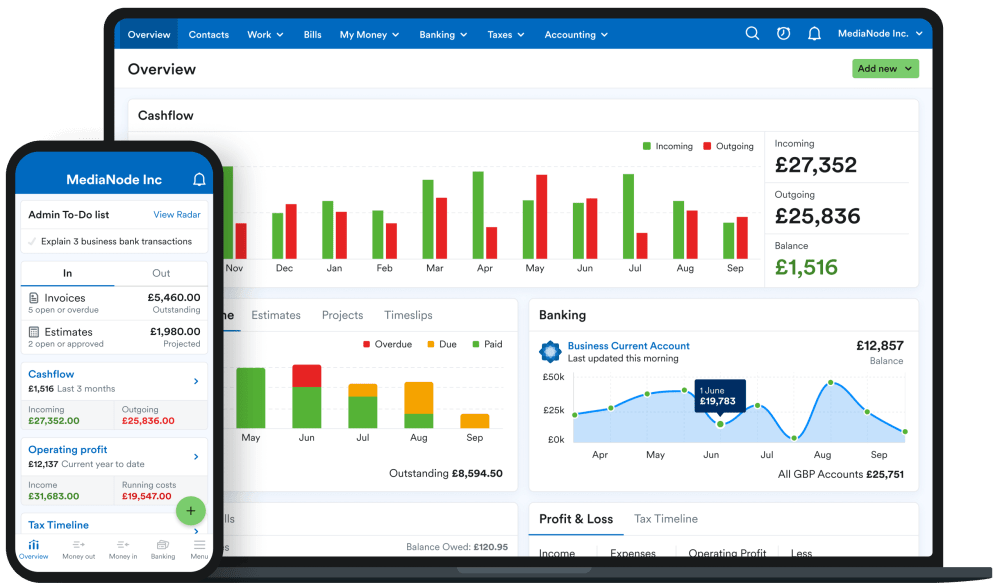VAT: what you need to know
VAT is short for ‘Value Added Tax’. It’s a tax on the sale of most goods and services. You can find out more about VAT on our accounting glossary.
The VAT registration limit
The current VAT registration limit is £90,000. Businesses and individuals must register for VAT once they have exceeded, or expect to pass their respective thresholds which are based on their VAT Taxable Turnover. You can find out more about when you need to register for VAT in our dedicated guide.
For more information on the VAT rate that applies to you, you can also check out our guide to the different rates of VAT.
Example: how to calculate how much VAT you owe
A self-employed graphic designer is calculating how much VAT they owe to HMRC. Their business is registered for VAT and the services they sell are subject to VAT at the standard rate of 20%.
They invoice their customer for services at an agreed price of £2,000 + VAT.
£2,000 + (£2,000 x 20%) = £2,400
They will keep £2,000 of this for their business, but the £400 VAT belongs to HMRC and they will need to include this on their next VAT return.
How to pay your VAT bill
For most types of payment you’ll need your 9-digit VAT registration number, which can be found on your online account or your VAT registration certificate.
| Online or telephone banking (Faster Payments) | Same or next day |
| CHAPS | Same or next day |
| Bacs | Three working days |
| Debit card | Three working days |
| Business credit card (1.5% charge, personal credit cards are no longer accepted) | Three working days |
| Direct Debit | Three working days |
| Standing order | Three working days |
| At your bank or building society | Three working days |
Online or telephone banking: If you’re paying by online or telephone banking (Faster Payments, CHAPS or Bacs) details for the HMRC bank account you should pay your tax bill into on the government’s website.
Debit or credit card: If you are paying by debit or credit card you can do so by following the links from your HMRC online account.
Direct Debit: You can set up a Direct Debit from your HMRC online account. Make sure you do this at least three working days before you submit your VAT return to ensure the payment is taken from your account in time. Once the Direct Debit is set up, HMRC will collect payments from your account three working days after the deadline on your VAT return.
Standing order: If your business uses the VAT Annual Accounting Scheme you can pay your VAT bill by standing order. You can set this up when you first apply for the Annual Accounting Scheme or later by using form VAT 622 or via online or telephone banking.
At your bank or building society: To pay at your bank or building society you’ll need to order paying-in slips from HMRC which can take up to six weeks to arrive. Using the paying-in slips you can pay by cash or a cheque made payable to ‘HM Revenue and Customs only’ followed by your 9-digit VAT registration number.
Previous VAT rates
| 4th Jan 2011 to today | |
|---|---|
| Standard rate | 20% |
| Reduced rate | 5% |
| Zero rate | 0% |
Previous VAT thresholds
| From 1st Apr 2024 to today | £90,000 |
| From 1st Apr 2017 to 31st Mar 2024 | £85,000 |
